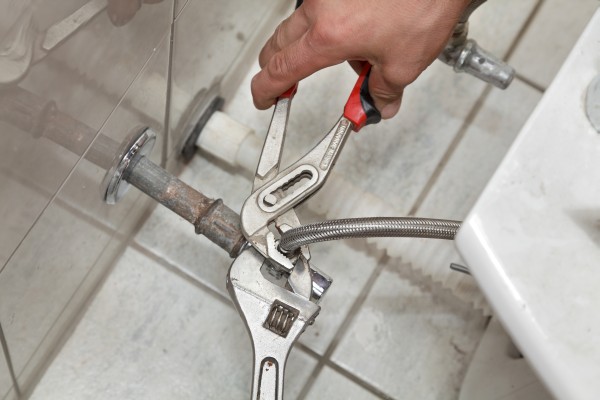 Let’s face it: nothing lasts forever, and that includes your plumbing. The pipes in your home have an essential role to play. Without them, you couldn’t shower, wash your hands, wash your clothes, cook dinner, do the dishes, bathe the kids, and so on. All day long, you are using the plumbing in your home, and even going without it for a couple of hours can be challenging, if not impossible. The larger your family is, the harder your pipes have to work all day, every day, all year long. In spite of that level of constant wear, most people never think about their plumbing until it starts causing problems. Given how essential it is, we recommend that you watch for warning signs and call us before you are dealing with a major catastrophe.
Let’s face it: nothing lasts forever, and that includes your plumbing. The pipes in your home have an essential role to play. Without them, you couldn’t shower, wash your hands, wash your clothes, cook dinner, do the dishes, bathe the kids, and so on. All day long, you are using the plumbing in your home, and even going without it for a couple of hours can be challenging, if not impossible. The larger your family is, the harder your pipes have to work all day, every day, all year long. In spite of that level of constant wear, most people never think about their plumbing until it starts causing problems. Given how essential it is, we recommend that you watch for warning signs and call us before you are dealing with a major catastrophe.
Here are signs your pipes need replacing:
#1 – Your pipes are older than their lifespan.
All materials have a projected lifespan, including the pipes used to creating your plumbing system. When you buy a house and have a home inspection, the inspector will note what type of pipes you have. Look them up online or call us to find out how long they should last (this can be anywhere from 40 to 100 years, depending on the material). If you have reached that point, you do not necessarily need to replace them but should have them inspected by a plumber in order to determine if there are any looming issues.
#2 – You see signs of trouble.
This could include bubbling, stains, dimpling, flaking, or discoloration since all these signs could indicate problems with your pipes and the likelihood of future leaks.
#3 – Your pipes are made of polybutylene or lead.
Both of these were used during the 1990s. Polybutylene is known to break fairly easily, which can cause leaks. Lead pipes are dangerous, of course, and should be replaced right away.
#4 – Plumbing leaks.
Any time you have a leak, you have to make sure it is an isolated incident. While it is easy and convenient to assume that it is not an ongoing problem, it is common for more than one leak to spring at a time. You need to inspect everything and identify small leaks so the pipes, or, at least, a portion of them, can be replaced if needed.
#5 – Watch for rust.
Water that is massively brown or yellow is not normal. If you leave town and come back a few days later, run your water and see what color it is. If you immediately see color, it could be a sign that you need to have your plumbing replaced.
With the events in Flint, Michigan, water quality is on everyone’s mind. Most important are the standards that have been put in place to manage water drinking water — or should we say, lack thereof. Yes, there is testing at the source, but if the problem is in your pipes, that is not the responsibility of the city or county. With that in mind, call us if you see signs of trouble with your plumbing.





